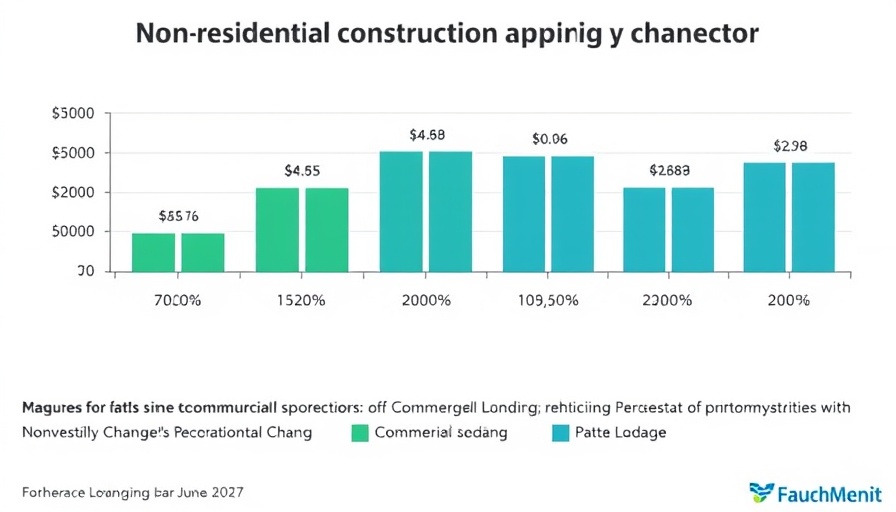
Understanding the Slide: A Closer Look at Non-Residential Spending
The construction sector is facing turbulent waters, with non-residential spending dropping by 1.1% year-over-year in May. This decline, as reported by the ABC, underscores ongoing challenges stemming from tariffs, labor shortages, and socioeconomic factors. What does this mean for commercial construction companies and their clients? Simply put, it’s a clarion call for smart project management and innovative solutions to keep pace with the demands of a changing market.
The Ripple Effect of Tariffs
Tariffs imposed on materials have long been a thorn in the side of the construction industry, causing cost inflations that ripple down to projects, impacting budgets, and timelines. Consider that a spike in steel prices can alter project feasibility, forcing contractors to rethink their strategies. In fact, the continued volatility in material prices is not just a fiscal headache; it directly affects project efficiency and client satisfaction. A cost-overrun during construction can lead to dissatisfaction, setting back relationships in an industry where trust is paramount.
Labor Shortages: A Challenge or an Opportunity?
The labor shortage within the construction industry has reached crisis levels, leading to delays and increased costs. Many construction firms find themselves in a tight spot, unable to secure skilled labor to meet project deadlines. With innovations on the rise, however, this could be a pivotal moment for leveraging technology. Automation and advanced training programs can fill the gap while promoting the well-being of workers. As companies explore these avenues, they can pivot from merely surviving labor shortages to transforming them into opportunities for growth and development.
Future Predictions: Adjusting to New Norms
Looking ahead, the industry must adapt to these shrinking margins of error. Future success hinges on embracing technological advancements, from prefabrication to data-driven construction management tools. Companies that proactively integrate smart building solutions can enhance project outcomes, making them more attractive to clients keen on both cost management and quality. These shifts in approach will not only streamline operations but also foster a more resilient industry capable of weathering future storm fronts.
The Emotional Toll of Market Changes
For clients of construction companies, the impacts of falling non-residential spending can often lead to anxiety about potential project delays or increased costs. Understanding this emotional landscape is critical for contractors. Open lines of communication and honest discussions about challenges can ease client fears and foster collaboration. After all, the best projects aren’t just built on bricks and mortar—they’re built on relationships.
Taking Action: What’s Next for Construction Firms?
The challenges that the construction industry faces today are significant, but they are not insurmountable. Clients must stay informed about market trends, advocate for technological adoption, and collaborate closely with construction firms to align on project goals. This proactive approach can help ensure that both parties are well-prepared to navigate the evolving landscape of the construction industry.
Now, more than ever, it’s essential for clients and companies alike to keep abreast of industry changes and rethink their strategies. As we embrace new technologies and strategies, let’s transform these challenges into opportunities for better outcomes.
 Add Row
Add Row  Add
Add 




Write A Comment